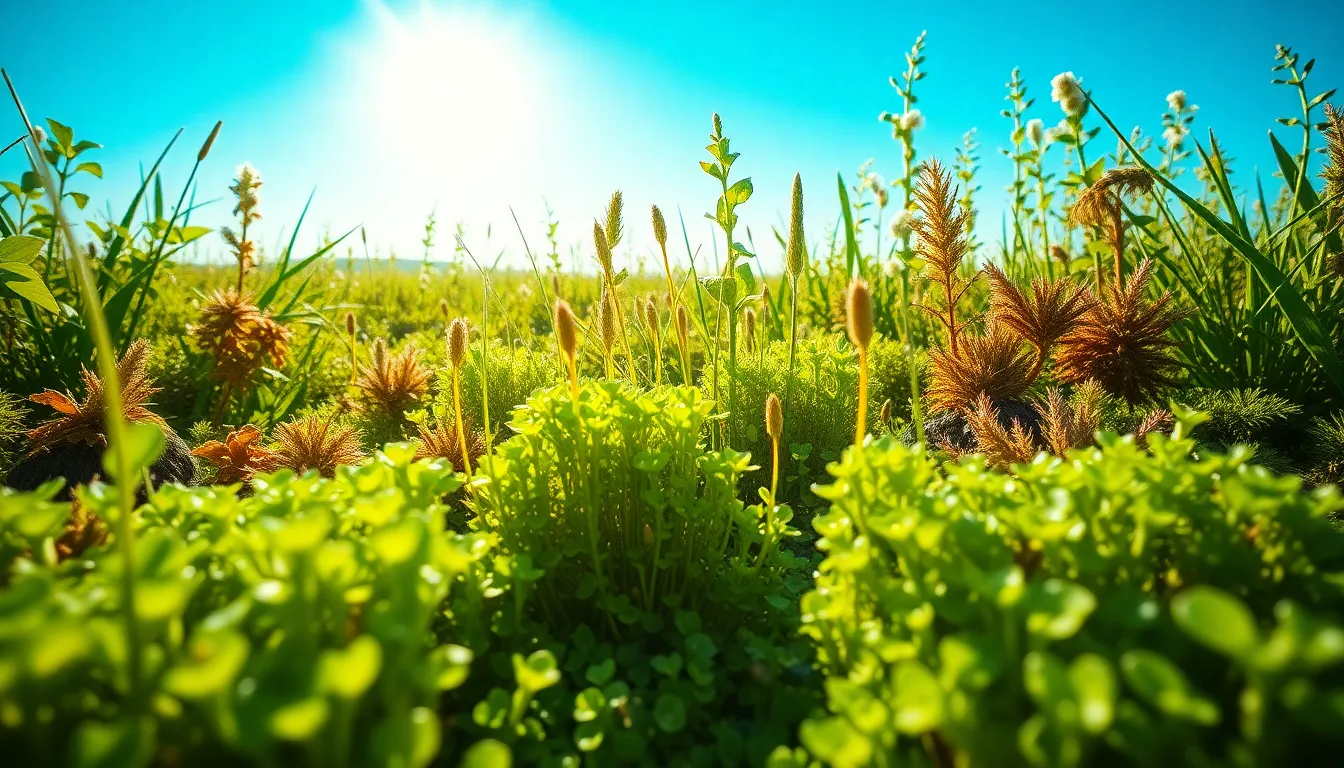In the grand theater of life, producers take center stage, playing a role that’s more crucial than a caffeinated intern on a Monday morning. They’re not just the folks behind the scenes; they’re the unsung heroes of ecosystems, converting sunlight into energy and providing the foundation for food chains. But what exactly is producer science?
Table of Contents
ToggleWhat Is a Producer Science?
Producer science explores the role of producers within ecosystems, focusing on how these organisms capture energy from the sun. Plants, algae, and certain bacteria are primary examples of producers, demonstrating the process of photosynthesis. This process converts sunlight, carbon dioxide, and water into glucose and oxygen. Energy conversion by producers serves as the foundation for food webs, supporting various consumers including herbivores and carnivores.
Ecological research relies heavily on producer science to understand energy flow and nutrient cycling. By studying producers, scientists gain insight into ecosystem health, biodiversity, and resilience. For instance, photosynthetic efficiency of different plants can indicate environmental conditions, such as soil quality and climate.
Aquatic ecosystems feature unique producers, including phytoplankton and aquatic plants. These organisms form the base of marine food chains, directly supporting fish and other wildlife. Understanding their dynamics helps in the management of fisheries and conservation efforts.
Human reliance on producers extends beyond food. They contribute to oxygen production and carbon sequestration, vital for combatting climate change. Sustainable agricultural practices also hinge on the principles of producer science, promoting crop rotation and biodiversity to enhance productivity.
Producer science encompasses the study of organisms that convert sunlight into usable energy, underpinning the biological foundations of all ecosystems. Its significance spans ecological balance, food security, and environmental sustainability.
Key Components of Producer Science

Producers are vital elements in ecosystems that capture and convert energy. Understanding the nature of these organisms reveals their essential roles.
Understanding Producers
Producers primarily include plants, algae, and specific bacteria. These organisms conduct photosynthesis, transforming sunlight, carbon dioxide, and water into glucose and oxygen. This process not only sustains the producers but also supplies energy for various consumers. By capturing solar energy, producers provide the foundational energy source that underpins all food chains. Phytoplankton exemplifies unique aquatic producers, playing a crucial role in marine environments. These organisms are highly efficient at energy conversion, ensuring the stability of their ecosystems.
Importance in Ecosystems
Producers hold significant importance in maintaining ecological balance. They support herbivores, which in turn sustain carnivores, and create intricate food webs. Energy flow depends on producers, making their roles indispensable. Nutrient cycling is another critical function; producers aid in replenishing soil and water resources, fostering overall ecosystem health. Additionally, their oxygen production is vital for many organisms, including humans. Carbon sequestration, another beneficial outcome of producer activity, helps combat climate change. Sustainable agricultural practices also rely on producers, emphasizing their role in food security and environmental sustainability.
Methods of Studying Producer Science
Various methods assist in studying producer science, providing insights into how producers function in ecosystems.
Research Techniques
Researchers employ techniques like laboratory experiments, modeling, and remote sensing. Laboratory experiments allow for controlled environments to analyze factors influencing photosynthesis. Modeling techniques simulate energy flow and predict ecosystem responses to changes. Remote sensing provides high-resolution data on vegetation health, allowing the assessment of photosynthetic activity across large areas. Each technique contributes uniquely to understanding producer dynamics.
Field Studies
Field studies are essential for observing producers in their natural environments. Observations often focus on light availability, soil nutrients, and water accessibility, which influence growth. Ecologists frequently measure photosynthetic rates and biomass to gauge productivity. Additionally, assessing plant interactions with herbivores and other organisms provides insights into competition and symbiosis. Such studies yield valuable data on how producers adapt and thrive within diverse ecosystems.
Applications of Producer Science
Producer science plays a crucial role in various fields, from environmental conservation to agriculture and food production.
Environmental Conservation
Producers are vital for maintaining ecosystem health. Their ability to capture and store carbon significantly contributes to climate stability. Phytoplankton, for instance, regulate oceanic carbon cycles, which helps mitigate global warming. Many conservation efforts focus on protecting habitats that support these producers. Strategies often include restoring wetlands and safeguarding forests to enhance biodiversity. By ensuring healthy producer populations, ecosystems can better resist environmental changes, promoting overall resilience.
Agriculture and Food Production
Producers serve as the foundation of sustainable agriculture. Their role in nutrient cycling improves soil fertility, which supports crop growth. Practices that enhance producer diversity can increase yield stability, benefiting food security. Techniques such as crop rotation and intercropping leverage the natural abilities of various plants to enrich ecosystems. Integrating producers into agricultural systems encourages ecological balance, reducing the need for chemical fertilizers. Ultimately, enhancing producer functions leads to healthier food production systems, ensuring sustainable nourishment for future generations.
Understanding producer science is essential for grasping the intricate dynamics of ecosystems. These organisms not only fuel food chains but also play a pivotal role in ecological balance and sustainability. Their ability to convert sunlight into energy underpins the health of various habitats and supports human life through oxygen production and carbon sequestration.
As research in this field continues to evolve, it becomes increasingly clear that protecting and promoting producers is vital for environmental conservation and sustainable agriculture. By prioritizing these organisms, society can ensure a healthier planet and a more stable food system for future generations. The ongoing exploration of producer science will undoubtedly yield insights that enhance both ecological understanding and practical applications in preserving our natural world.






